Teaching a child how to ride a bike is a fun and rewarding experience that can provide many benefits for their physical, cognitive, and social development. Our daughter Matilda was a relatively early cyclist at just 4 years old and we went through a number of steps to make sure she was able to ride her bike and become a competent cyclist.
Helping a child learn how to ride a bike can open doors to so many wonderful opportunities. Not only is it a great skill to have but it also enables you as a family to build social activities around cycling.
This is what we now do and not only has this completely changed how we plan our weekends it also means we are looking after the health of our children as they grow and develop.
Before jumping on a bike there were a number of initial steps to familiarise our daughter with the life of cycling. This is something we’ve continued with our son.
Initial steps
Bike seat as young as possible:
Cycling has to become a normal, everyday activity for your child. Influences start from such a young age and we’ve always tried to get our kids on the back of our bikes as young as possible.
According to guidance, you can take your baby in a bike seat from the moment they can independently sit up straight for some time. This moment usually comes when they’re about 9 months old. This is for both front and rear-mounted bike seats.
We introduced our boy (currently 2) to the bike seat as young as possible. We’ve done a 10-mile circuit with him on the back of our bike and he loves it. Whenever we are going out in the car now he thinks we are going out on the bike and is visibly upset. It’s pretty amazing really!
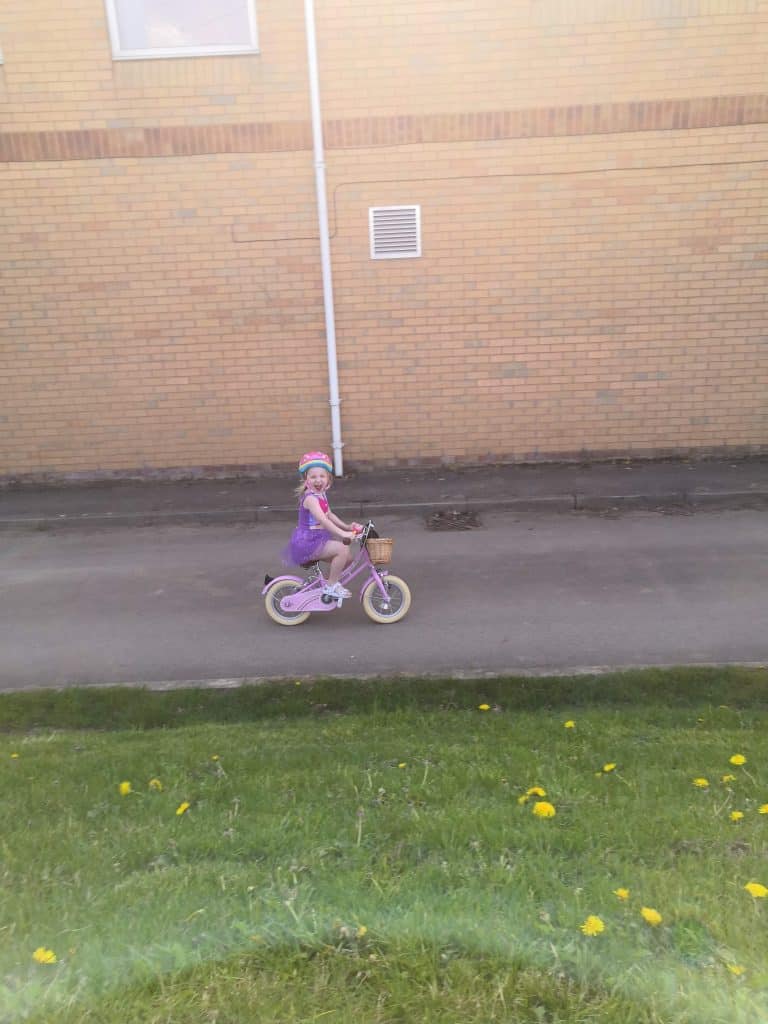
Balance Bikes:
A relatively modern development; we introduced our daughter to a balance bike from a young age (and now our son). She used to love cruising around the garden on the balance bike. When it first arrived I was sceptical but you immediately see how easily they take to it.
Balance bikes are designed to help children learn the fundamentals of cycling without the need for stabilisers.
Because they have no pedals, children can focus on balancing and steering the bike, which helps them develop the skills they need to ride a pedal bike more easily. Balance bikes also build leg muscles which in turn help with strength once they transition to a bike with pedals.
The design of a balance bike also typically encourages a natural and comfortable upright body position, which can make it easier for children to transition to a pedal bike. Additionally, balance bikes are often made of lightweight materials, which makes them easier for young children to handle and manoeuvre.
You may also find that when using a balance bike your child may find stabilisers quite restrictive. We quickly realised this and removed them which enabled Matilda to learn to ride more quicker.
Those initial steps will provide you with a great base to get them onto a pedal bike. The key is PATIENCE throughout. It’s a brand new skill and ultimately as humans, we are quick to try and quit something which is difficult. Try to stay calm and help them through every step of the way.
Also, remember all children are different so our experience with Matilda could be completely different to yours. It’s important to take your time and I hope the steps below can help you teach your child how to ride a bike as it opens a whole world of opportunity.


Steps in teaching a child how to ride a bike:
- Start by choosing the right bike for your child. Brands like HOY & Frog offer lighter bikes which are easier to cycle. Some of the themed bikes you can get from the large stores are heavy and difficult to learn on. It’s important to select a bike that is the appropriate size for your child’s height and ability level.
- Condition: It sounds obvious but the bike should also be in good working condition, with properly inflated tires and functioning brakes.
- Introducing pedals: Once they can balance on the bike, introduce pedals and have them practice pedalling. You can help them by holding the bike steady and running alongside them as they pedal. As they become more comfortable, you can let go of the bike and let them pedal on their own.
We were super lucky here as we taught Matilda to ride her bike on the street during the March lockdown of 2020. It meant that there was no traffic on the street and we could comfortably go up and down the street over and over. Repetition is good here.
You can achieve a similar experience from traffic-free places like the Trans Pennine trail, National Trusts or any type of park which allows child cycling.
- Using your brakes: A fundamental part of cycling is the use of brakes to start and stop. Show them how to use the brakes and teach them the importance of slowing down before coming to a stop. You can also practice emergency stops, in case they need to stop to avoid an obstacle quickly.
Braking is obviously a difficult thing to teach as it’s easy for a child to think they need to pull on the brakes hard. Teaching them to slowly apply the brakes takes a little time for them to understand; especially when of a young age.
Older children will obviously understand this more but the key is to stay patient and allow them to make mistakes. They’ll soon understand the weighting of brakes and how applying them can slow you down.
Our main challenge in this area was transitioning from the balance bike way of stopping with your feet to utilising the brake. This takes some time to understand. Matilda would regularly put her feet down to stop and did for some time. It’s a gradual process which eventually they will understand. - Learning to turn: Once they can start and stop confidently practice turning. You can use cones or other markers to create a simple obstacle course for them to navigate. Encourage them to look where they want to go and steer in that direction, rather than just turning the handlebars.
It may be a challenge to get the cones out depending on where you live. Other ways to teach turning are within parks where paths wind in different directions. - Short rides: As your child becomes more confident and skilled, take them on a short ride on a quiet street or in a park. Be sure to supervise them closely and provide encouragement and support. We tend to focus initially on places which are completely away from roads. Parks, National Trusts, and cycle paths are all good ways to do this. For most of the learning phase, we also walked/jogged vs riding our own bike to make sure we could react to any issues.
As Matilda got more confident we would take our own bikes and visit places with dedicated cycle infrastructure (see our articles for more details). Progression and time was the key here. - Bike safety: I know this is a controversial topic but teaching your kids basic bike safety is a useful skill in my eyes. Unfortunately as a nation, we haven’t embraced high-quality, segregated bike lanes as a primary mode of transport.
This means cycling on the roads can in places be dangerous. From our experience, the majority of drivers are respectful however we have had times when drivers have passed us incredibly close despite cycling with children.
Bike safety includes why wearing a helmet in the UK due to infrastructure challenges makes sense and following traffic rules (stopping at red lights, hand signals and so on). You can be the most proficient cyclist however you are at the mercy of other road users so staying vigilant is always encouraged. - Challenge them further: As your child continues to practice and improve, you can gradually increase the difficulty of the routes you take. Parents want to provide their children with the best start in life but this sometimes can mean they are constantly in their comfort zone.
As humans we are robust and pushing your child with longer, more challenging rides will improve their overall cycling ability. It’s easy to fall into the trap of sticking to the easy routes however you want to push your child and make things harder for them. The better cyclist they become the more you as a family can see and experience by bike which is one of the best ways to view the world.
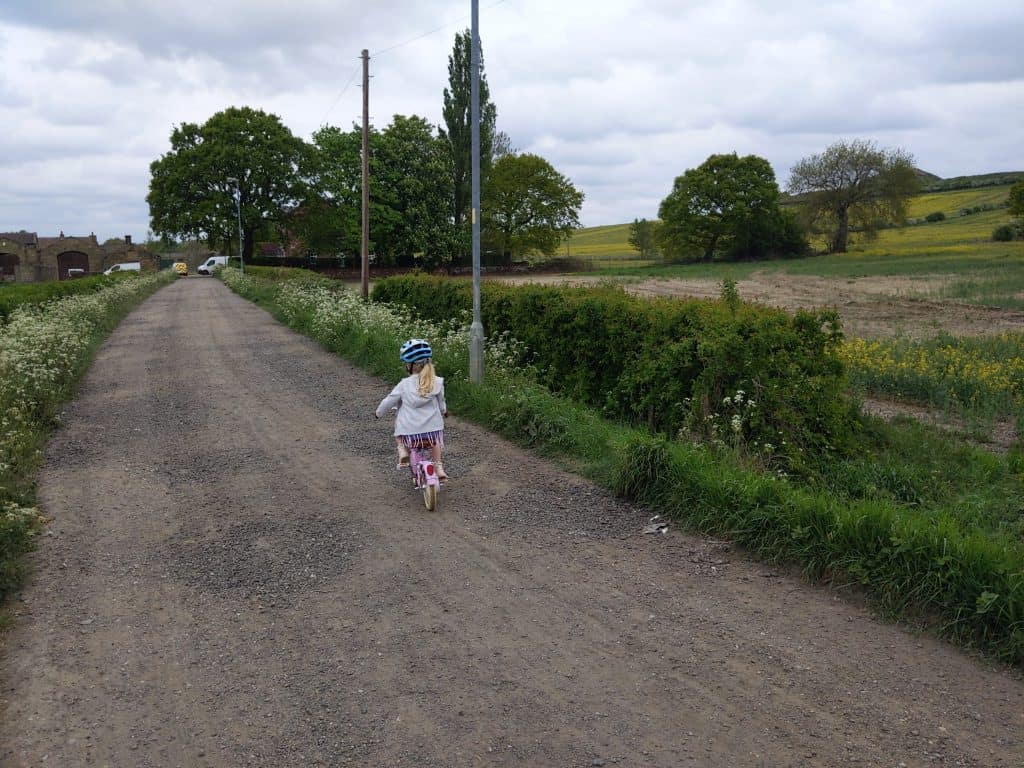
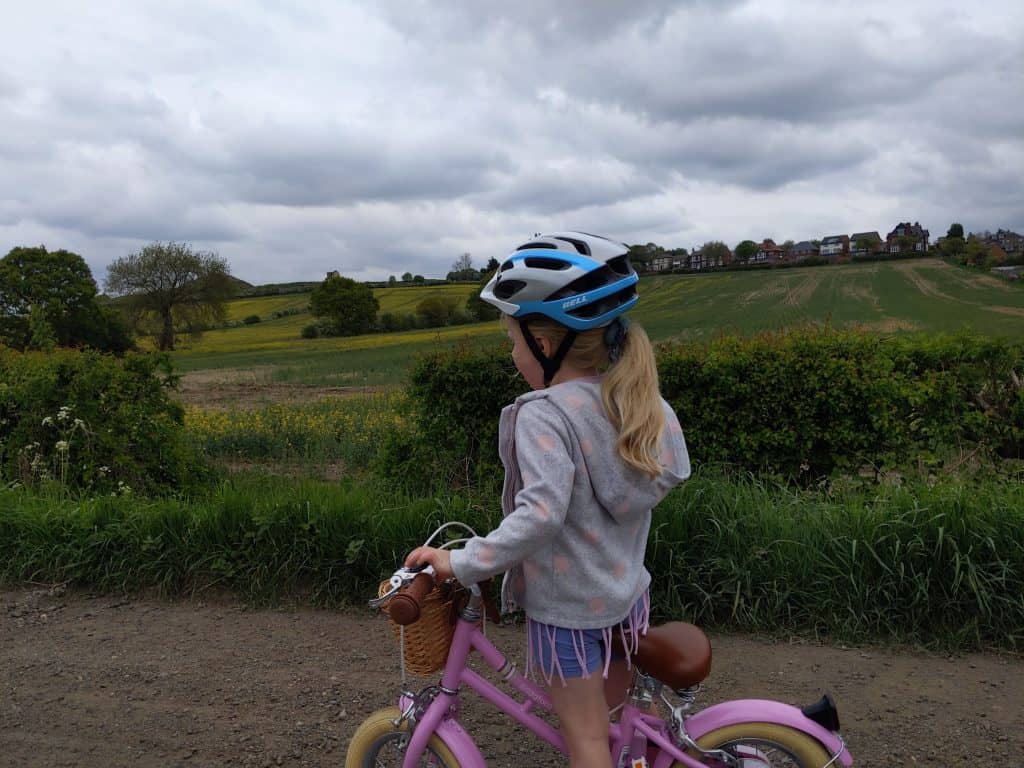
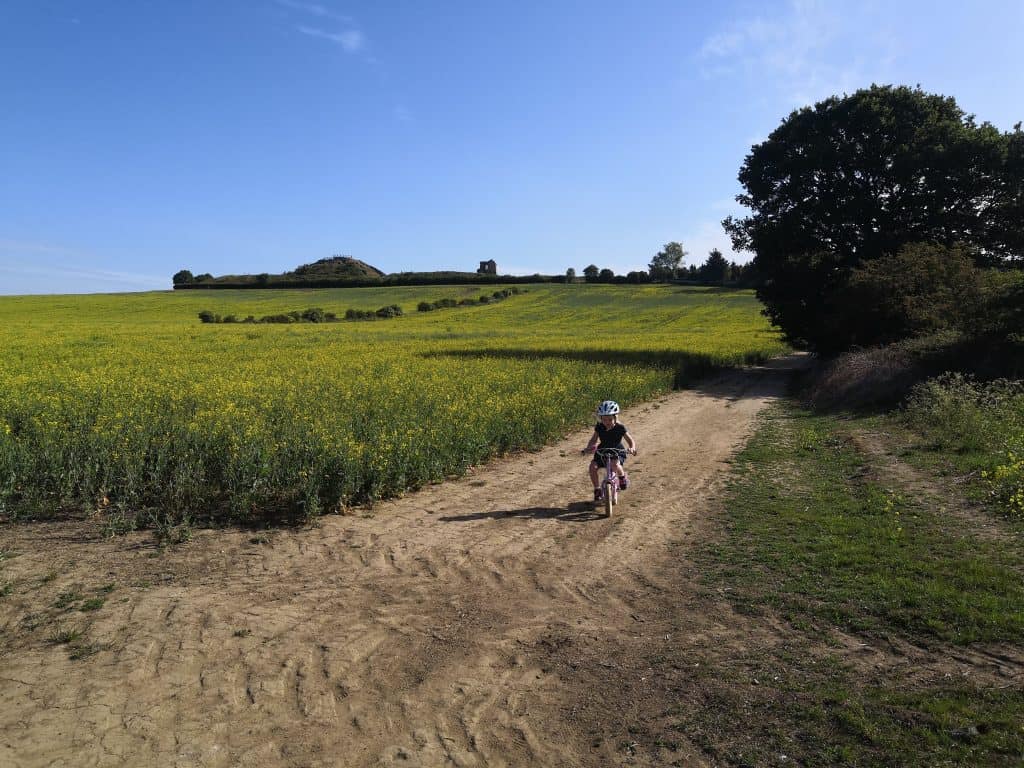

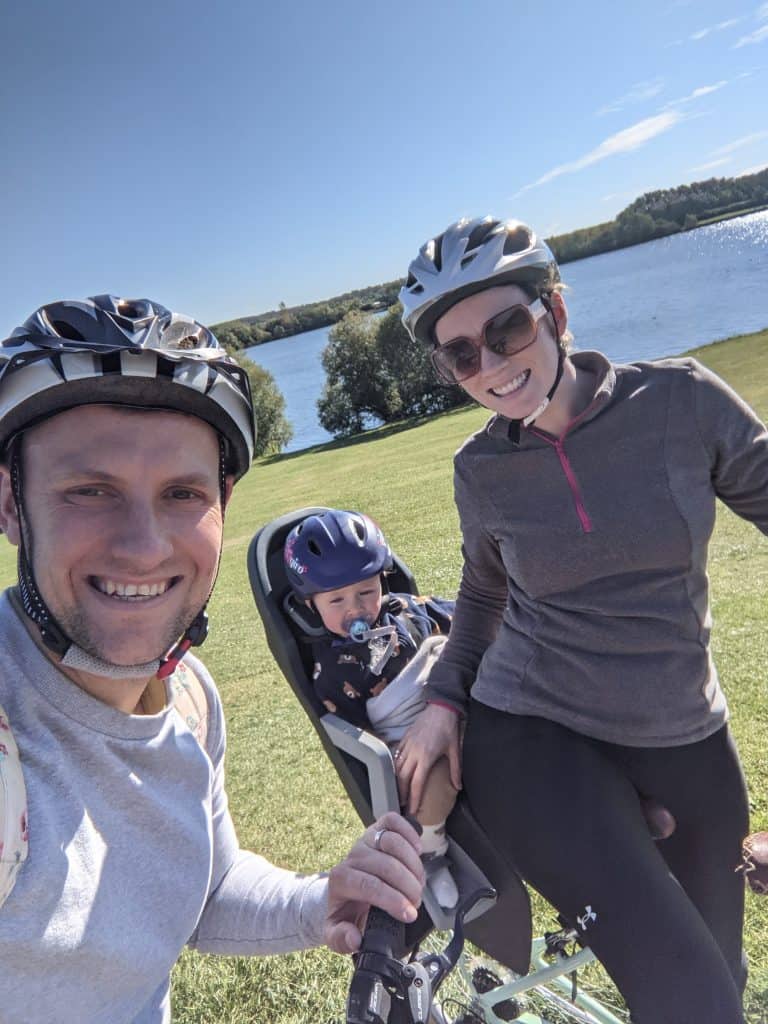


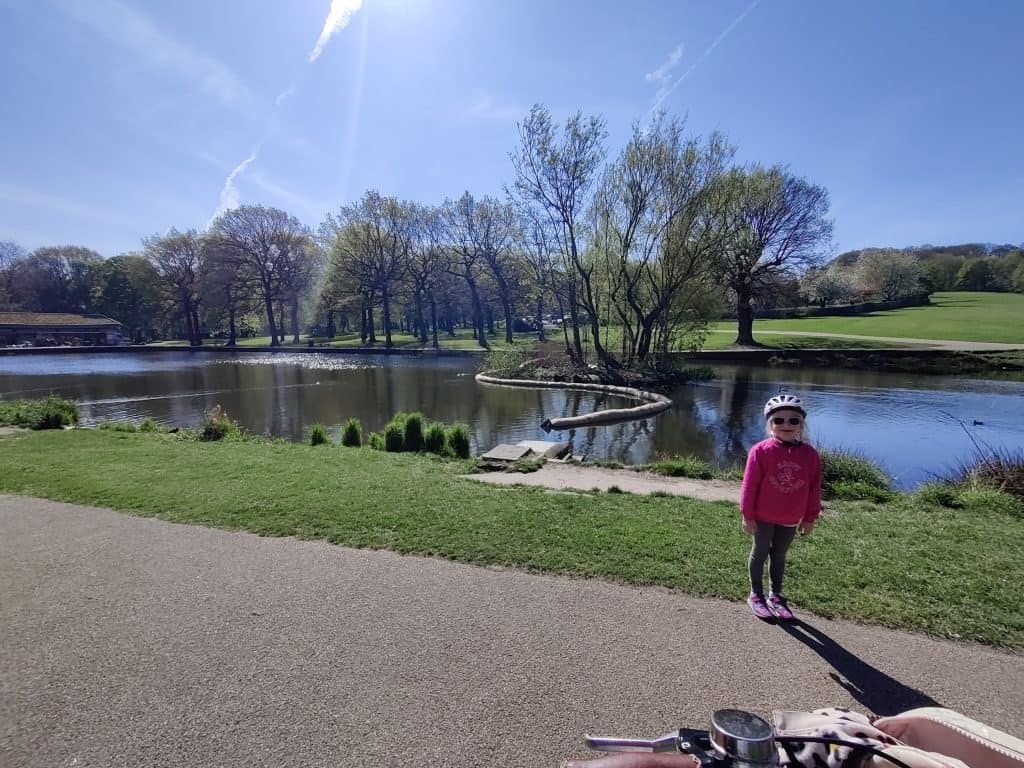



Teaching a child how to ride a bike is an exciting and rewarding process that can provide many benefits for their physical, cognitive, and social development. By providing the right equipment, guidance, and encouragement, you can help your child learn to ride a bike and enjoy all the fun and benefits that come with it.
It’s been over two years since we taught our daughter Matilda how to ride her bike. Although she took to it quickly we’ve had moments on longer rides where she is tired and wishing we could stop but she’s now an incredibly capable cyclist for her age.
Like all the great things in life it’s certainly not easy and won’t be gifted to you however I hope the photos below will inspire you to push your child in learning to ride their bike. It opens the doors to so many wonderful experiences and it’s something I think all parents should endeavour to do.
Best of luck with your teaching!
Last Updated on December 12, 2022 by Ryan
Hello. I am Ryan and along with my wife Beth and our two children Matilda and Barney, we love all things cycling and exploring. We spend our weekends exploring fun places to cycle and discover and wanted to help other people do the same too. There’s no better way to travel than via bike and it’s an amazing activity for the whole family to enjoy.

5 thoughts on “Teaching a child how to ride a bike”